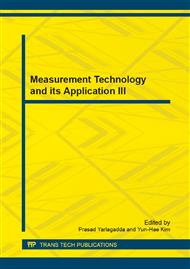p.227
p.233
p.238
p.243
p.249
p.254
p.260
p.265
p.270
The Functional Study of Artificial Heart Valve Based on HHT
Abstract:
The functional study of artificial heart valve has the positive significance on the postoperative care of the patients with valvular heart disease and the precaution of postoperative complications. The analysis of the heart sounds is the most direct way to estimate the function normally of heart. Because of the heart sound is nonlinear and nonstationary. Compared with the normal method of time-frequency analysis, Hilbert-Huang transform can analyze the nonstationary and nonlinear signals more accurate and more effective. Hilbert-Huang transform is introduced to the functional study of artificial heart valve. It used for extracting the inherent characteristics. Using the empirical mode decomposition (EMD), the heart sound was decomposed into a series of intrinsic mode functions (IMF). The Hilbert spectrum was established by the calculating results of these IMFs. The Hilbert spectrum has the characters of time-frequency-energy, and then the marginal spectrum was structured. Comparison with the characters of pre-operation and post-operation was used for reveal the function of artificial heart valve. At last, we use the short-time average energy and the short-time average range to verify the credibility of Hilbert-Huang transforms method. The result of simulation show that this method was well analyzed the function of artificial heart valve.
Info:
Periodical:
Pages:
249-253
Citation:
Online since:
June 2014
Authors:
Price:
Сopyright:
© 2014 Trans Tech Publications Ltd. All Rights Reserved
Share:
Citation:


